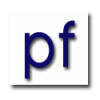
POSITIVE
FEEDBACK ONLINE - ISSUE 1

 |
POSITIVE
FEEDBACK ONLINE - ISSUE 1 |
|
The Classic Records Reissue of Heifetz Playing Bruch’s Scottish Fantasy: One
of My Top Two Shaded Dogs The RCA Shaded Dog of violinist Jascha Heifetz playing the Bruch Scottish Fantasy (LSC-2603) has always been one of my two favorite Shaded Dogs, right up there with the Reiner Scheherazade. In my humble opinion, this recording represents Heifetz at his glorious best. The music is evocative, moody, compelling, rather dark at the beginning, and quite romantic. It continues moving forward and drawing the listener inexorably in. Heifetz’s violin tone on this recording is stunningly pure, and wrought with feeling. This famous violinist, perhaps the most famous of all time, is sometimes chastised for being too cold, and for placing technique before feeling. Not on this recording. Heifetz displays a dazzling technique, but one that is coupled with tremendous depth of feeling. This is a commanding performance, in which fluid pyrotechnics are coupled with delicacy and subtlety when required. It is outstanding music outstandingly played, and it belongs in the collection of every serious classical music buff. The flip side of the LP is the Vieuxtemps Concerto No. 5, a lyrical and fiery piece that showcases Heifetz’s extraordinary talents to a fare thee well, but it is my beloved Scottish Fantasy that is the focus of this review (no baaad sheep jokes, please). I compared my treasured original Shaded Dog with the 33 rpm and 45 rpm releases by Classic Records. (For you connoisseurs, on my original Shaded Dog, the Vieuxtemps side is a 3S, but on the Scottish Fantasy side, the number before the S is illegible, seeming to have made no impression in the lacquer. My fantasy is that it’s a 1S.) The cover on the Classic reissue is beautifully done, with no detail missed, and with a color balance that is a very close match to the original. The 45-rpm version, graciously provided by Coleman Brice, Classic’s new director of marketing, is produced on four one-sided 45 rpm 12" discs. All three versions of the recording were auditioned on a VPI TNT turntable, using a JMW Memorial tonearm, a Benz Ruby cartridge, a Hovland tonearm cable, a Black Diamond Racing record clamp and Shelf for the Source, a TNT stand filled with 200 lbs of lead shot, a Klyne headamp, a Music Reference RM-5 preamp, a Music Reference RM-9 amp (both tubed), Cardas interconnect and speaker cables, modified Eminent Technology Model 8 loudspeakers, and Black Diamond Racing Pyramid Cones, pucks, and shelves. (I would like to thank Brooks Berdan of Brooks Berdan, Ltd., in Monrovia, California, for the loan of the RM-9 following the death of my amp. Brooks is the best high end dealer I know, a recognized analog guru, and well worth a serious visit.) I was glad for the opportunity to make this comparison. At the very least, I would get to hear some of my favorite music played again and again. Following careful back-and-forth listening, here is how the records stacked up. The original Shaded Dog has a gorgeous midrange, but the bottom end is anemic (having been summed to mono in those days) and the orchestra sounds a tad turgid and opaque. By comparison, the 33-rpm Classic Records reissue has better transparency, a better sense of a real orchestra playing in a real space, a distinctly better top end (as clearly evidenced by the shimmer and float of the cymbals), and a distinctly more fleshed-out bottom end. The spectral balance is shifted a bit toward the treble, helping to remove the touch of turgidity and opaqueness of the full orchestra. At the same time, however, Heifetz’s tone sounds a little richer on the original. I get the distinct feeling that Bernie Grundman and team dug everything they could out of the original master tape, and on balance the 33 rpm version is a distinct improvement over my treasured original. The nearly dead-quiet surfaces are a welcome touch, also. But then there’s the 45-rpm version. Wow, what a difference! Now the subtle inner details of Heifetz’s string tone are resolved, sudden changes in his bowing are fully revealed, the cymbals sound far more real, and the individual orchestral instruments are much better reproduced. Classic’s 45 rpm is a whole new ball game, providing not just a quantitative difference, but a truly qualitative one. The 45 rpm version is much more lifelike than either the original Shaded Dog or the Classic 33 rpm. It has transparency, inner detail, truth of timbre, and nuance of feeling and technique that are only hinted at in the other versions. I could hear more of the dynamic shadings, more of the composer’s intent, and more of the players’ interpretations. And I didn’t have to strain to hear it. The 45-rpm recording is far more satisfying, and it made it hard to go back to the 33-rpm version. Hearing this recording made me realize that I’ve been spending far too much time on United Airlines lately, and far too little time in the listening room. This review is an unqualified rave for the 45-rpm version. I strongly urge you to snap up a copy for yourself at the earliest possible opportunity. You won’t be sorry. (And if you are, you heathen, please send your unwanted copy to me. There’s no such thing as too many backup copies of this particular LP!) My regards to Bernie Grundman, who cut the Classic LPs, and to Coleman Brice for so graciously and effectively representing their products. Kudos, guys.
|